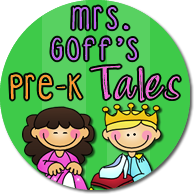Tammy at Forever in First has become one of my very favorite go-to blogs because I love how thoughtful she is about how she teaches and treats her students. She is the teacher I would want for each of my own four, very different, children. Tammy has again demonstrated her respect for her students with her current post about why she doesn't use behavior charts in her classroom. Tammy says that when she makes classroom decisions (either academic or behavioral) she keeps in mind how she would feel, as an adult, if those decisions were made for her. What a simple way that is to evaluate our choices...a version of the Golden Rule. I think that so many of our actions would be better if we routinely asked ourselves "how would I feel if this was done (or said) to me?." Tammy's post was inspired by a very articulate post by Nikki at Teaching in Progress titled Why I Will Never Use A Behavior Chart Again." Nikki suggests a "Take a Break" Center where children can go if they need to take a breather or think about making different choices. This sounds like a wonderful idea.
I wrote a post several months ago about my concerns with Clip Charts and what I had tried in my kindergarten class. You can read that post here. As I describe in that post, I liked the easy positive systems created by Angela Watson from The Cornerstone and Sally from Fairy Dust Teaching.
 |
| The Cornerstone's Simple Token System |
I feel very strongly that one of the most important things I can do as an educator of young children is to make sure that they are excited about going to school and that they feel confident about their ability to learn. I think that this should be an overarching goal of all primary teachers (perhaps all teachers:) It has always been my experience that children who want to learn will learn and I fear that any system that relies on publicly degrading (and evaluating) children will interfere with a child's intrinsic excitement about learning.
















Lyn, I'm humbled by your words. There are definitely days when I don't feel deserving, but I thank you for having that kind of faith in me. Thank you for joining Nikki's linky. Your thoughts and practices are perfect compliments to her post.
ReplyDelete❀ Tammy
Forever in First
Tammy, I really do appreciate your insight. Lyn
DeleteThank you so much for linking up! You've gotten right to heart of it - showing respect for the little people left in our care each day:)
ReplyDelete~Nikki
Teaching in Progress
love, care and respect. they sure go a long way.
ReplyDeletesandi
rubberboots and elf shoes
Yep ;)
DeleteTotally agree!
ReplyDeleteBarb
Grade ONEderful
Hi Lyn I just read you post( looking around at blogs on a Friday night) and I came across yours. I agree with you about the behavior charts and I too use methods just like yours in order to keep peace and harmony in the classroom. Unfortunately not all teachers can do that if they are in a school that has a unified discipline system. It depends on the administration which can leave a teacher in a bad place when he or she feels as we do...not wanting to use a behavior chart. I came from a school like that and while I did not use a public display, I had to use a small chart in the child's folder for behaviors like hitting/hurting others and destructive behaviors. Of course a parent had to be notified of these types of behaviors as well. So I always tried to look at a behavior and determined if it was inconsequential or consequential.
ReplyDeleteAs Early Childhood Educators we know that young children cannot run around classrooms freely hitting and hurting others without some sort of consequence. However, if a child is lying on the carpet during story time, while the behavior might be annoying me, I would let it go because it is inconsequential. So I tried to make the best of a bad situation. I did not like to use the chart but had no choice. I decided to look at each situation and determine is it consequential or inconsequential?
By the way...your blog is very cute!